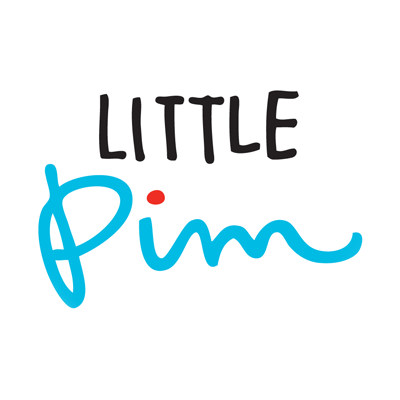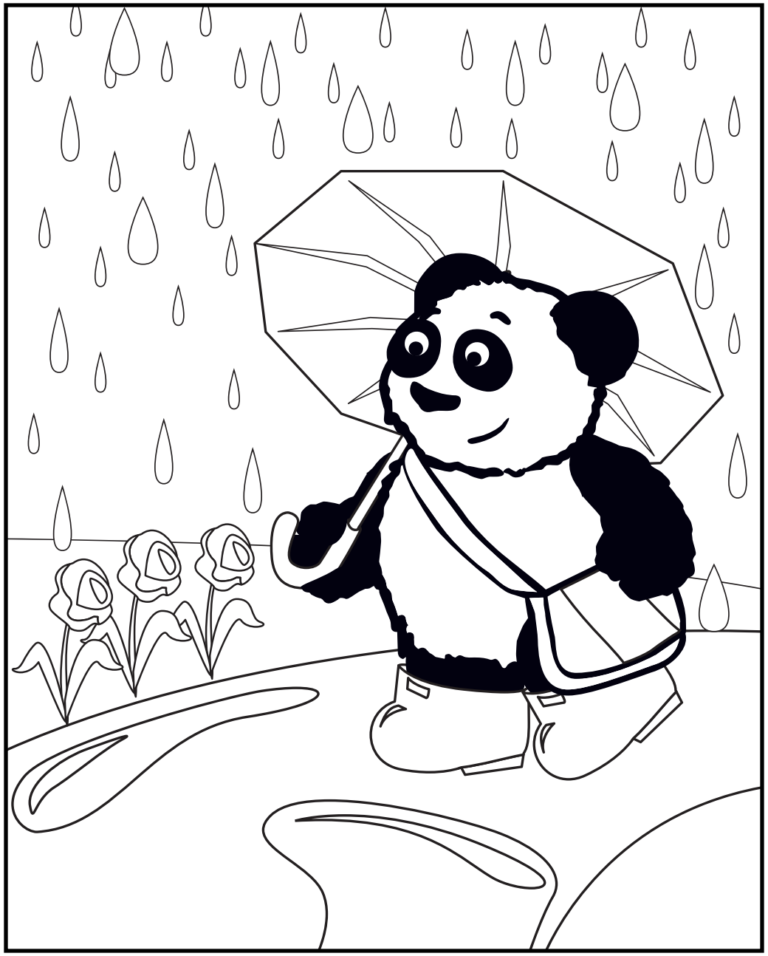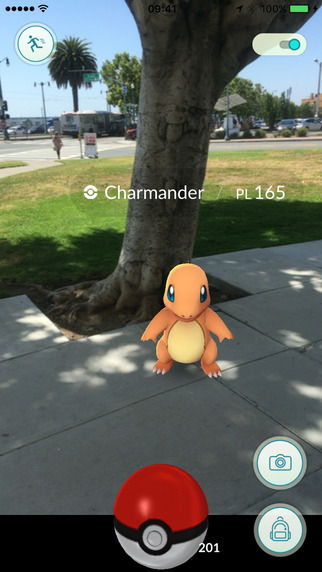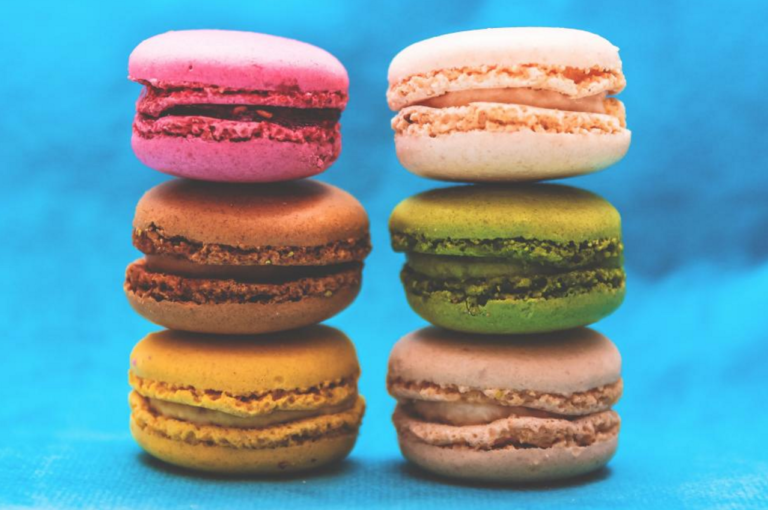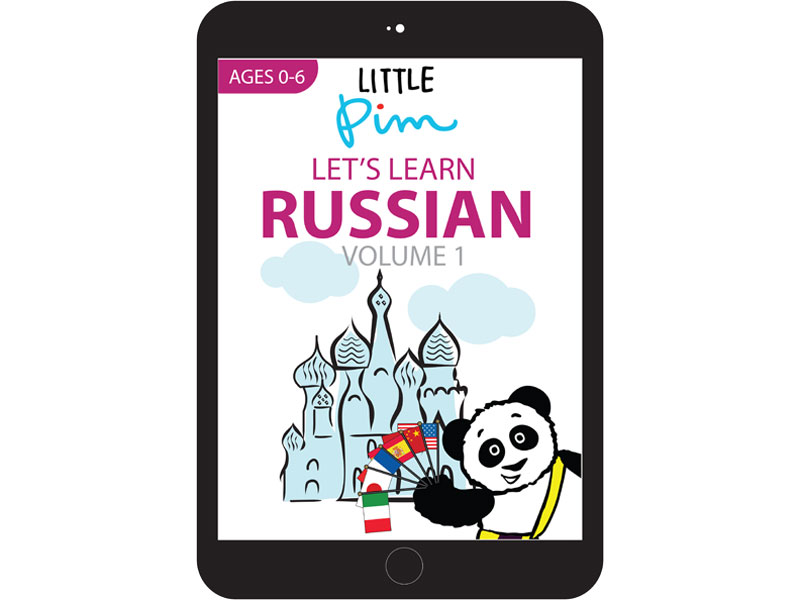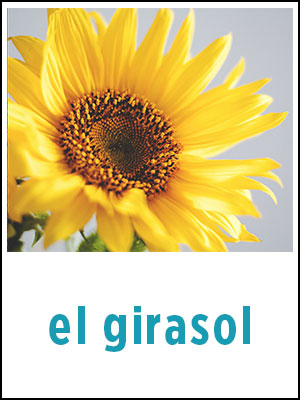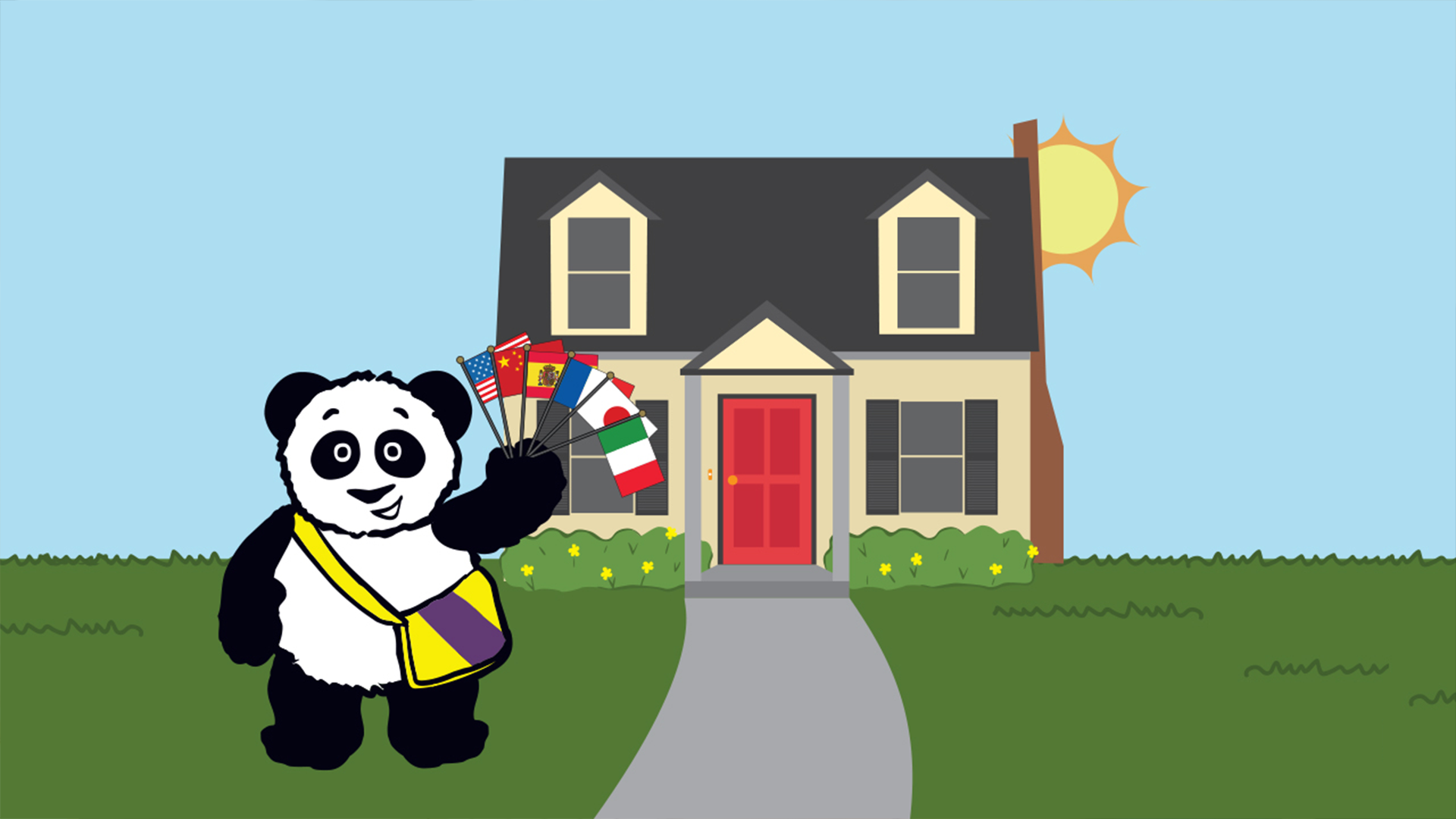
LITTLE PIM BLOG
Differences Between Brazilian and European Portuguese
Portuguese is one of the most beautiful, romantic, Latin languages. As the sixth most spoken mother tongue in the world, Portuguese is an excellent choice for your toddler or preschooler.Speaking Portuguese, even if you have no ties to the language and culture, is a marketable skill that will serve your child well in the future.
As with English, the country where the language is learned and spoken makes a lot of difference in words, pronunciation, and grammar. The Portuguese spoken in Brazil is so different from European Portuguese that it is often referred to as Brasileiro, according to the website Lexiophiles.
There are many reasons for these differences and here are two of the most obvious ones.
Cultural Influence
In Brazilian Portuguese American Indian tribal languages donated many of the words for local foods, plants, and animals, as well as other objects. These words are unknown to speakers of European Portuguese.
Italian, French, and African languages such as Yoruba, have also found their way into Brasileiro. These add a significant contribution to the vocabulary of Brazilian Portuguese that does not exist in European Portuguese.
Intonation and Cadence
Brasileiro is more musical or lyrical than European Portuguese. Vowels are more open than those in European Portuguese and to English speakers, European Portuguese can sound somewhat muffled. Brasileiro is syllable-timed like Spanish with equal stress on all syllables. And European Portuguese is stress-timed, with stressed and unstressed syllables in words, which is more familiar to native English speakers.
Little Pim’s language courses for young children make learning Portuguese an exciting, playful, and educational experience for your child. She will learn 180 Portuguese words and phrases to start her on a lifelong path of bilingualism. Browse our website for more information on Portuguese language learning for your child.
Rainy Day Coloring Activity
Add some color on a gloomy day by printing out this Rainy Day Little Pim coloring sheet. July 29th is Rain Day according to the DaysoftheYear.com calendar and throughout history, people of many cultures across the world have celebrated rain and it's "life-giving power." Teach your little ones about the power of rain and how it is necessary for survival. If it's raining where you are, head outside with the kids to walk in the rain and to jump in some puddles! When you get back inside, serve some fresh fruits and vegetables that need rain to grow. Review your color and food vocabulary as you point out each fruit and vegetable in the second language. After a healthy snack, get their creative juices flowing by printing out Little Pim's Rainy Day Coloring Sheet!
Share your rainy day fun with us by using #LittlePim on Instagram or Twitter!
Click here to print out the rainy day coloring sheet.
Incorporating Language Learning into the 2016 Olympics
Flash forward a couple weeks from today: It’s a sticky summer day, and to cool down and spend some quality time with your kiddos, you decide to go home, sprawl out on the couch, and watch the Olympic games. Your child becomes disengaged, or maybe your kid loves the games and is glued to the television. Either way, you are missing out on a huge opportunity to teach your children Portuguese and make them feel a deeper connection to Rio than the screen in your living room. We, here at Little Pim, recognize this language learning opportunity, and luckily, we offer lessons and flash cards in Portuguese that will make your son or daughter speak as well as Gabby Douglas flips in the time of a Usain Bolt 100 meter dash.
Sports Vocabulary
The most obvious vocabulary to introduce to your child during the Olympic games would be basic sports vocabulary, like the words for: ball, referee, pool, court, and field. To try to cultivate the strongest correlation between the words you are teaching and an image, it is probably smart to introduce the vocab as its corresponding image appears on the television.
Additionally, since the words you will be teaching them are about being active, you can make the language learning active. Play a game of catch while watching the 2016 games. When you have the ball, say the English word, and have your child say the Portuguese translation upon catching the ball. They can learn more about how to discuss playtime in Portuguese with the Little Pim “Playtime” lesson, which is available for online purchase. This online accessibility means they can sit on the couch and learn Portuguese on any device with the Olympics on in the background.
Geography
The Olympics has a record number of countries competing this year, so now more than ever the Olympics is a melting pot of cultures. This presents you with the ability to expose your child to a plethora of different countries. With that, you can teach them how to say each country’s name, main languages, and prominent religions in Portuguese. You can pull out a map and point at the country in question as you go along! If your family has roots in a certain country, this is a great time to introduce a bit of that country’s language too; Little Pim lessons could probably help you do so!
Counting
The number system is critical to any language, so it is a good place to start when learning Portuguese. As the shot clock winds down or the race is about to begin, have your son or daughter count down in Portuguese. They will be ready by New Years to count down to 12 AM in Portuguese!
Start by counting numbers 1-10 in Portuguese, then go backwards to start the countdown:
10 – dez
5 – cinco
9 – nove
4 – quatro
8 – oito
3 – três
7 – sete
2 – dois
6 – seis
1 – um
Stats
As each athlete’s statistics are plastered across your television screen, you can teach your little one the words for goal, assist, point, etc. This can be a particularly great exercise with little boys and girls who have already developed a passion for sports
(it is probably genetic) and enjoy memorizing statistics from player cards and a teams’ websites.
Personalize the Activity
If your son or daughter is especially fond of one sport that will be performed during the summer games, make sure to focus on the vocabulary relating to that sport. This will make the language learning of greater value in their eyes, and thereby more fun for them. For example:
Get Involved As a Parent
If you are fluent in Portuguese or have never heard a word of it, speaking the language with your kid makes it a group activity as opposed to a chore. Additionally, if your whole family wants to extend your exposure to Brazilian culture beyond language learning, please refer to a post coming out soon about fun activities infused with Brazilian culture that you can do right at home.
Vocab Reinforcement
For the words to stick, a child needs to become familiar with them by hearing them a number of times. On your way to a mall or weekend get-away, you can review the Portuguese vocab in a fun trivia-like format. The Little Pim flash card set could serve this purpose really well!
Teach Love and Kindness
Sports have the power to transcend countries’ borders, racial divides, and social differences. That power is what makes the Olympics such a beautiful thing to watch, especially today when these issues run rampant in our society. Teaching your child the English words for unity, equality, fairness, and sportsmanship, for example, is a powerful action in it of itself. Imagine the power of teaching them these words in yet another language, like Portuguese.
By teaching your child another language at a young age, you accomplish many things. You make them smarter, you differentiate them from other children their age, and you ultimately make them more valuable to our society and a potential employer. Above all of those things, you make them sensitive to and connected to another country, culture, and way of life. In learning a new language, they are learning to respect differences instead of hate them, just as sportsmanship teaches. Language learning is powerful. Sports are powerful. Rio is the perfect opportunity to combine sports with language learning, an action that could have an amazingly powerful impact on your child.
P.S. It will also be fun!!
Pokémon Go Guide for Parents with Young Kids
Everyone is going Pokémon crazy with the release of Nintendo's new app, Pokémon Go. As a parent of little ones, it's important to learn about the pros and cons of this app before letting your kids dive in on the fun. We've been playing for almost a week - for research purposes only, we promise ;) - and have seen the big phenomenon hit the streets of Manhattan and across the country. You've probably heard the news regarding the potential dangers of playing the game or perhaps you've downloaded the app yourself and can't get enough. We've compiled some great tips about how to make Pokémon Go a fun, safe, and educational game to play with your little ones.
Protect Your iTunes or Google Play Password from Your Kids
Pokémon Go is free to download, but there are in-app purchases to buy PokéCoins for different items in the "Shop." These purchases require you to login to your iTunes or Google Play account, so be sure your kids are not able to do so by disabling in-app purchases or keeping your password safe to avoid getting a huge bill at the end of the month. You and your family can still have all the fun for free as long as you play wisely to collect more items from PokéStops.
This app requires cellular data
Photo courtesy of J House Vlogs on YouTube
Like many mobile apps, playing Pokémon Go will require use of your cell phone's data, so hopefully you have an unlimited data plan or else you'll probably start receiving texts from your carrier warning you that you've used a majority of your data this month. If you're hitting the max data allowed per month, you may need to have your data turned off until the cycle restarts. Also, this app will do a number on your battery life. Make sure you're fully charged before you head out the door or carry a charger with you.
Make it Fun AND Educational
Playing the app can be rather simple once you understand what to do. You're playing as the Pokémon trainer who collects Pokémon (cute, little "pocket monsters" with unique traits and skills) outside. The app connects to your GPS to show you your location and the whereabouts of Pokémon in the wild, nearby PokéStops, and gyms where you can virtually battle other players. At the end of the day, you and your kids could be walking miles on this virtual scavenger hunt while discovering local landmarks and small businesses that you'd normally never visit. This provides a great opportunity for kids to get outside and explore, with your supervision of course.
When you get to a PokéStop and it's a historical landmark, spend time with your little ones to read about the landmark and start discussions about the history. Playing Pokémon Go during summer vacation can be a fun way to teach your kids about your local surroundings and to provide incentives to take trips to the library or museum for more typical summer learning. You can even use family trips to a local gym or PokéStop as an incentive for finishing a desired task or summer reading.
Always Be Aware of Your Surroundings
According the the AppStore and Google Play store, the recommended age to play is 9+ years due to a warning for "Infrequent/Mild Cartoon or Fantasy Violence." Our biggest concern is having little kids roaming the streets while looking down at their device ("distracted walking") or being "lured" into a dangerous area, which is why we recommend that a parent or guardian is always present to supervise your children, especially your young ones when playing this app. Recent reports mentioned that players are using the "lures" (a feature used to lure more Pokémon to a location) to plan a robbery or to lure children. Always look up when walking and hold onto your kids when crossing a street or intersection. We recommend playing this game at your local park or an area where there is little traffic.
Another part of the game involves eggs that hatch into new Pokémon. When you collect an egg, you can incubate it by walking a certain distance (2 km, 5km, 10km) to make it hatch. We love that this feature gets you and your whole family outdoors walking instead of indoors on the couch. Different types of locations have different varieties of Pokémon, so you will have plenty of opportunities to explore fun spots with your kids, for example, when you visit a body of water such as a lake or river, you will see more water Pokémon.
It's a Great Way to Make new Friends
Parents playing the app with their little ones will quickly notice they aren't the only ones. When walking to a PokéStop or local museum or library that put out a lure to gather people for an event, you will most likely make a connection with another family. Since school is out, now's the perfect time to get out there and meet other parents and children who have similar interests. It's also a great opportunity to connect with your local area's small business owners and support them by buying the family ice cream or a delicious pizza pie!
Due to the game's diverse players, you're probably going to meet a bunch of families who are also raising bilingual children. This gives your kids a great opportunity to practice speaking in their second language with other children their age.
Language Learning with Pokémon Go
Here at Little Pim, we're all about making language learning fun, easy, and effective for young children. We thought of ways to tie in language learning into the game to keep their brains active all summer long.
Counting
You can have your kids count the number of steps to catch the Pokémon in the foreign language they are learning. If the Pokémon is further away, help them out with the bigger numbers and eventually they will learn all the numbers in the new language.
This app also forces you to learn the metric system as the distance to walk to hatch your eggs is in kilometers you can convert them to miles. A recent article by MentalFloss pointed out that according to Google Trends, searches for “how far is 2 km” and “how far is 5 km” spiked after July 6.
Vocabulary
Create your own flashcard set with a Pokémon Go theme. Choose vocabulary words that you encounter while playing the game, i.e. street, library, tree, ball, catch, throw, as well as all the related animal names you can think of. If you're child is learning Japanese with Little Pim, teach them the 1st Generation Japanese and English Names:
[iframe id="https://www.youtube.com/embed/8_gjbvAYhzw?rel=0" align="center" autoplay="no"]
Explore New Cultures
Here in New York City, we have an extraordinary mix of different cultures present within walking distance. For example, you can take a family trip over to Koreatown with your little language learns to get a glimpse of the Korean culture and enjoy the delicious cuisine at an authentic restaurant. Perhaps you'll run into a nice family of native Korean speakers that are also playing the game to spark up a conversation so your child can practice speaking in Korean.
Head over to Little Italy to catch some Pokémon and practice your Italian by pronouncing the various food and restaurant names. Enjoy some delicious Italian cuisine when in the area.
Learn more about NYC's ethnic neighborhoods from BusinessInsider to begin exploring this summer whether you're a local or just visiting.
Have Fun and Be Safe
Outdoor play and social interactions for kids is great, but can also present risks. As a parent of little ones, we recommend you supervise your child's cellphone use and play this fun game by their side. Make it a family activity and take the opportunity to teach your kids about "stranger danger" and the risks of "distracted walking." We hope you enjoyed reading this guide and wish you the best of luck in "catching them all!"
If you have any other tips for parents playing Pokémon Go with their kids, please comment below. Don't forget that you can also take Little Pim with you during summer vacation with our digital downloads available in 12 languages. Your kids will be speaking a new language in no time with our unique approach. Learn more on our website or contact us during business hours. Enjoy the rest of your summer and stay safe!
3 Ways to Make Bastille Day As Much Fun As the Fourth of July
Bastille Day is upon us! This July 14th presents a perfect opportunity to get you and your young ones excited about language learning through some French culture. While the topic of the French Revolution may seem like a dry subject to your average 0-6 year old, (or even to you), here are some great tips about how to make this another fun-filled summer holiday:
1. Build A Fort
The French working class stormed the Bastille, the prison, to gather ammunition stored there.
Grab your kids and build a fort with lots of blankets and cushions and voilà you have your own make-believe Bastille. Make the password to enter to the fort a French word to incorporate some vocabulary. If the kids are having fun, you can quickly grab some French-inspired snacks to munch on inside the fort, like Brie cheese and crackers or macaroons. If you have the time and want to try your hand at some more serious preparation and cooking, check this these French recipes via Betty Crocker. This is the perfect Bastille Day activity if it’s raining outside or if you want to escape the sweltering heat.
2. Go Down To the Tennis Courts (or Out to the Sidewalk)
Soon after the storming of the Bastille, the members of the Third Estate, (working class men), were locked out of the Estates General meeting, which was supposed to be an assembly of all the French classes. They retreated to the nearby indoor tennis court and took an oath that demanded a new constitution.
If your family is on vacation or has access to a tennis court, bring the kids with you and have them make up their own game with the balls and/or racquets. This game can act as their very own constitution for the “republic of the tennis court.” Even if there isn’t a tennis court around, you can use some chalk to draw a small court on the sidewalk. This would be a great time to introduce your kiddos to some French sports vocabulary. Also, if the game is more active, you can have your kids “warm up” with some hops and jumping jacks, counting out loud how many they are doing in French. The “I Can Count” lesson from our French for Kids program (Vol II, Video 6) can help refresh their French counting skills.
3. Have a Picnic and Mini Parade
On Bastille Day in France, there is a huge parade along the Champs-Élysées.
Picnic in the park and have the walk back be a mock parade. You can get the little ones excited by breaking out the red, white, and blue attire from the fourth of July- luckily American and French national colors are the same. For some red, white, and blue food options to bring on the picnic, refer to the previous Fourth of July blog posting! As you are picking out the clothes or preparing the food, you have the perfect chance to teach the kids the French words for various colors. Additionally, the Little Pim flashcards or coloring sheets are a great post-picnic activity in the park.
What’s Happening in NYC?
Here in our home of NYC, there are some more official celebrations all around the city. For more information visit TimeOut's"Bastille Day in NYC" guide.
We, here at Little Pim, hope you and your whole family make great memories this Bastille Day while also getting a taste of France’s lively culture. We hope we can join you in helping your children experience more of the world!
A Simple Guide: Which language is best for my child to learn?
Choice is an incredible gift. For parents, however, it is also paralyzing. When our choice regards our children's education, we catalog every possible option, outcome, success, and worst-case result, don't we? Little Pim applauds such parents who want desperately to choose what's best for their child. We recognize how this deliberation is firmly rooted in love, so we not only gift you with choices, we also equip you with helpful tools to choose. Seeing as multicultural awareness and the growing necessity for well-rounded children has never been as strong, we're thankful for your interest in at least one of the 12 language programs we offer. You've likely had the thought: Which language is best for my child to learn? The following guide should help you confidently navigate your choice, as well as this important note.
Children aged 0-6 have brains best for learning up to three languages at once! If you can't choose one, why not consider two or more? Your child will soon thank you for this choice between multiple languages learned. What a unique potential to influence our world!
Little Pim's Twelve Language Programs:
Spanish
As the 2nd most common language in the United states, Spanish is one of the simplest languages for English-speaking children to learn and one of the most useful languages in the world for travel. There are over 414 million Spanish-speaking people in the world. Spanish lends well to learning other Latin-based languages in the future such as French and Italian. These languages all have Indo-European roots and share some characteristics that are present in Spanish but not English. Knowing Spanish can open up many job opportunities for your little ones, especially in the United States in healthcare or education industry.
Check out LeapFrog's blog to learn about 10 benefits of teaching your child Spanish.
French
Did you know that French is the most widely studied language in the world? As the official language of over 29 countries, French is highly utilized in the world of higher learning, literature, culinary arts, and fashion. It is also recognized as an official language of the United Nations. There are also many words in the English language that have French origins, such as "rendezvous" or "cinema."
French is also one of the foreign languages our founder, Julia Pimsleur, chose for her two boys, Emmett and Adrian. Adrian speaks fluent French and Emmett speaks some Spanish, French and Hebrew.
Mandarin Chinese
It's the most widely spoken language in the world! An increasing demand for Mandarin-speaking employees is just one reason to start your child early! Spoken by over 1 billion people worldwide, Mandarin is an official language of the United Nations. Mandarin Chinese is tonal, which means that pitch is used to distinguish its lexical or grammatical meanings. The earlier a child begins to learn this language, the easier it is for them to pick up on the differences in tone and begin employing them correctly.
The latest trends we’ve seen at Little Pim are new parents choosing to teach their child Mandarin alongside romance languages like Spanish and/or French.
Russian
As the official language of the former Soviet Union, Russian is still spoken in 15 European and Asian countries. Russian is spoken by almost 280 million people worldwide, and is an official language of the United Nations. It is the fifth most frequently spoken language in the world. International political developments and growing business opportunities with multinational companies have led to increased demand and opportunities for Russian speakers.
The Russian alphabet is easy to learn and only has 33 letters. It is a Cyrillic script, which is a writing system used for alphabets across Eastern Europe, as well as North and Central Asia. The Russian alphabet is wonderfully phonetic, making it even easier than English as the letters have a consistent pronunciation.
Italian
Italian remains one of the top 5 languages studied in US colleges. Over 7,500 businesses correspond with Italy hosting over 1,000 US firms. If you're child is a musician or music lover, he or she will love learning Italian. Did you know that Italian is the language with the highest number of words for naming food, restaurants, dishes, and produce? For more reasons to learn Italian, check out The Italian Academy's article on the "Top 10 Reasons to Learn Italian."
German
As the 10th most spoken language in the world, this language has English roots. Phew! There are thousands of words that are closely related known as "cognates." Why not try this language long-associated with academia and science. Knowing German also increases business opportunities as Germany is the #1 export nation in the world.
Japanese
Almost every nation in the world includes some aspect of Japanese culture and commerce. Tourists flock to Japan annually, supping from its offerings and influence. Japanese is the 9th most spoken language in the world, with 128 million speakers. Japan has the 2nd largest economy in the world, which leads to increased demand for Japanese speaking experts. Learning Japanese may also inspire your child to learn the other Asian languages we offer such as Korean or Mandarin Chinese.
Arabic
As an official language of the United Nations, Arabic is the most widely spoken Semitic language. Arabic is spoken by roughly 300 million people. Many English words have Arabic roots; words like 'candy,' and 'spinach.' Yum! According to AmericanCounsels.org, "In the last 15 years, U.S. government agencies have expressed a much greater need for Arabic speakers to address the complex political, military, and economic questions surrounding U.S. engagement in the Middle East and North Africa."
Hebrew
Over 10 million people speak Hebrew daily. Worldwide, millions more study Hebrew for both religious and cultural reasons. If you or your little ones plan to travel to Israel, learning Hebrew will definitely come in handy as it's the national language. Israel is also one of one fastest-growing high-tech economies in the world. Learning Hebrew can be easy and fun, especially with Little Pim by your side.
Portuguese
Welcome to the language of the Southern Hemisphere! Because this language is rarely studied, speaking it is an incredibly marketable skill. Did you know that Portuguese is the 6th most spoken language in the world, with 215 million native speakers?
By learning Portuguese, your kids will have a much easier time picking up any of the other romance languages like Spanish, French, or Italian since they all have Latin roots.
Korean
Korean is currently growing in popularity due to South Korea's powerful economy, geopolitical importance, art and culture. There are over 80 million Korean speakers in the world and the Korean culture is like no other. Many people choose to study Korean because they fell in love with the culture. Korea is famous for K-pop music and Korean dramas. For more reasons, check out our blog post on why your child should learn Korean.
English
Little Pim's most popular language program outside the United States in our English/ESL program. After Chinese and Spanish, English is the world's most spoken language with over 335 million speakers worldwide.
Learning a second language can be fun, easy, and effective with Little Pim. Language learning should always be a positive experience and cannot be rushed. Remember to praise your little ones for speaking in the second language. Teaching your child a foreign language can be a great way to give your child a head start and prepare him or her for the global economy.
For more extensive explanations, you can read further here. And of course, please do not hesitate to comment below contact us with any questions.
Fourth of July Kids Activities
Summer is in full swing and here at Little Pim, another holiday means more fun activities to do with your little ones! If you're staying local this Independence Day, be sure to check your community websites and local news sites for celebrations across town to enjoy great fireworks, fairs, BBQs, and more to create beautiful memories this holiday. We're expecting gorgeous weather on July 4th here in NYC, 85 degrees and sunny, which means we need to make sure everyone is covered in sunblock and staying hydrated all day long!
KIDS ART
Our first activity is this festive coloring sheet with Little Pim celebrating the 4th of July! Setup your kids outside with crayons or markers and hang the finished artwork as decoration for the weekend's festivities. Print out a few copies for all the kiddos to keep them occupied during an event.
If you're feeling a bit more creative, you can try this fireworks painting with salt and watercolor paint via Busy Mommy Media. It's actually fairly easy and only requires a few materials you probably already have in your home: table sale, paper (black works best), watercolors, brushes, white glue, and a cookie sheet). Visit their website for step-by-step instructions.
SWEET TREATS
Your kids will love helping you in the kitchen with these healthy and colorful fruit skewers. Make the U.S. flag design with fresh strawberries, banana slices, and blueberries. Berries are so delicious during the summer! Even better, pick your own or find some at your local farmers market! Be careful with the sharp ends of the skewers.
HOMEMADE POPSICLES
A great way to beat the heat this summer is to create your own popsicles! Check out our blog post on how you can make your own Mexican Paletas at home for your little ones to enjoy! Get create and use berries to make red, white, and blue popsicles to celebrate the fourth!
MESSY FUN: DIY SLIME
We recommend doing this activity outside so clean up will be a breeze! This recipe is fun and safe for kids as it doesn't use Borax and you can color them red and blue, perfect for the 4th of July!
What you’ll need:
- Plastic bowls
- Water
- Cornstarch
- Food coloring
In a bowl, combine 1 cup of cornstarch and 1 cup of water. Mix until you have a good and slimy mixture.
Add 1 to 3 drops of food coloring.
Repeat with other colors.
Then play away.
We hope you and your family have a wonderful and safe holiday weekend! Remember to incorporate Little Pim and language learning in your family summer fun! Have your kids name each color in a different language when making crafts or recite the names of the fruits in their second language when prepping summer treats in the kitchen. If you're traveling this holiday weekend, you can take Little Pim with you with our digital downloads available in 12 languages. Happy Independence Day, America!
5 Tips for Summer Travel with Kids
Summer is here and like millions of people, you are probably planning on traveling. If you have young children, you might be looking for some ways to make the trip easier. Here are 5 tips for summer travel with kids.
1. Do your research
There are lots of travel websites with customer ratings that can be very helpful. Many of them tell you if destinations are kid-friendly or not. You can also check out the travel section of the local bookstore or library. Travel agents can also take the guesswork out of booking a great vacation.
2. Pack plenty of activities for the car or airplane
A plastic tote fits perfectly in the backseat of the car and can hold coloring books, crayons, and small toys. Little Pim flashcards are a great addition to the box of goodies for the ride. If you're traveling by air, invest in a small book bag that counts as your child's carry on. It will easily hold these items and provide hours of entertainment.
3. Have electronic entertainment ready to go
Download a playlist of kid-friendly songs for your trip. Bring your copy of Little Pim's Spanish or French Bop so the whole family can sing-a-long in a new language. With Little Pim's digital downloads, you can watch our language learning videos anywhere, anytime. Of course, don't forget to bring your Little Pim Panda plush and tag your travel pics with #littlepim.
4. Take plenty of snacks
You'll save a lot of money and avoid unnecessary stops if you already have small packs of crackers or pieces of fruit ready. Some sweet treats are also a nice surprise.
5. Don't overbook your trip
It can already be difficult for little ones to be off of their normal schedule. If your kids still take naps, leave time for them to take one during the trip. Try to put them in bed at the normal time. If Little Pim is part of your daily routine at home, take some time each day to continue. Your child will benefit from progressing toward his or her goals.
Summer is the perfect time for your child to begin or continue learning a new language with Little Pim and going on vacation can actually be a fun way to incorporate our program. If you're interested in having your child learn any of the 12 languages we offer, visit our website to learn more and watch a free preview today.
Family Activity to Promote Bilingualism During Summer Break
Kids of all ages can't wait for summer. Family bonding and extended bilingual learning is something you can pursue when there is no school, and there is time to explore other interests and hobbies. Pressing flowers and leaves is a time-honored craft that our grandmothers and their grandmothers enjoyed. Generations of children in different cultures have delighted in preserving a bit of summer or fall, then using the pressed flowers and leaves in crafts.
Sample Flashcard for “sunflower” in Spanish
Help your child to learn the names of the flowers and leaves in their second language. Learning flower and leaf names is a great activity for extending your child's bilingual education through the summer months. You can even create flashcards using the dried flowers. Your handcrafted cards can supplement the Little Pim Flashcard set in your current curriculum. Not only will you advance your child's vocabulary in their second language, but you will also be adding to their botanical knowledge.
Research shows that children can lose many of the gains they made in reading, writing, math, and language acquisition over the summer months. Planning summer activities to keep your child learning will keep them on-track and ready to move forward when they return to school in the fall.
How to Press Flowers
The simplest way to press flowers is in between the leaves of a thick book. Any flat open-faced flower will work. Some flowers that press well are geraniums, pansies, oxalis, Queen Anne's Lace and phlox. These abound in the spring and summer months, in most areas of the United States and many other countries. Leaves press well too. Include leaves of common trees such as oak, maple, elm, and willow. For contrast, press the colorful leaves in the fall, as well.
1. Pluck dry, flat-faced flowers, to press. Remember, never remove flowers if there are only a few in that area. Choose flowers that are abundant, and don't take all of them. Make sure there are enough left so that the plant will be able to reproduce.
2. Spread the flowers out flat, on at least two layers of tissue paper. Cover with two or more layers of tissue, or white paper towel.
3. Place the paper, with the flowers inside, between the pages of a thick book. Make sure the flowers are not touching.
4. Close the book, and place it where it will remain undisturbed.
5. Check to see if the flowers have dried, in about two weeks. If the flowers are sticking to the tissue paper, they are not sufficiently dried. Close the book, and leave the flowers for another two weeks.
6. Use the flowers when they are sufficiently dried in your craft activities, home-made books, and flashcards. When flowers and leaves no longer stick to the paper, they are sufficiently dried.
To learn more about Little Pim's award-winning language learning program for kids ages 0-6, please visit our website or contact us during office hours. We hope you have a great summer with your little ones!
Why Bilingualism is Crucial to Your Child's Future
The world is getting smaller and smaller. Jet liners, bullet trains, the internet and new international markets are blurring the lines on our old maps. Our future is changing. The world that our children grow into isn't going to be the one of ours or our parents. That's why it's time to take the future seriously. Parents, grandparents and teachers need to put on their "game faces" and have a serious talk about bilingualism.
When a child is bilingual, their mind opens up to an entirely new world. We know that in this ever-changing global economy, those fluent in more than one language have better odds at a brighter future. The United States has seen a rapid change in language and culture over the last century that has facilitated the growth of professional bilingualism in the public and private sectors.
To put it into layman's terms: bilingualism = jobs.
Translators have always been an important component at every level of government and business. But translating isn't the only profession that requires the mastery of another language. Today, educators and medical professionals often find themselves in situations that require the use of a language other than their native tongue.
Complex global affairs have caused leaders to identify a need for bilingual talent within the government. Corporate outsourcing has increased the amount of multilingual interactions in the business world. Many nations around the world are rising as economic superpowers - such as Russia, China, and India - and to learn the languages of such nations increases the desirability of any potential hire.
You must be wondering...how are these things relevant to my child now?
Foreign language careers are on the rise. When your bright-eyed three-year old graduates from college, she'll enter into a job market in which multilingualism is a highly sought after skill. Research done by Korn/Ferry International stated that over 66% of North American recruiters felt that being bilingual would become extremely important over the next 10 years. Today, many HR departments require eligible candidates to be bilingual. If you look on any job posting website, you will likely see hundreds of jobs - even part-time work - that require bilingual candidates.
Language learning should start young. Adults can learn languages, but as our brains mature they tend to over-analyze. This makes it incredibly difficult for many adults to pick up a second language. Young children don't have this problem. According to a study at MIT, children go through a "sensitive period" for language learning that lasts until puberty. Between birth and five years of age, the human brain is hard-wired for learning multiple languages*. After age five, this critical window begins to close and it gets much harder to acquire a new language and a good accent.*
Language learning is proven to "feed the mind." Learning another language gives kids an educational edge over monolingual peers. Longitudinal studies at Harvard suggested that language learning "increases critical thinking skills, creativity, and flexibility in children." Speaking more than one language can help kids with planning and problem solving. It also helps children with attention and cognition. According to Psychology Today, children in bilingual environments perform better on standardized tests and have better academic performance in general.
To give your kids a leg up in a competitive educational environment as well as the job market, it's imperative that language immersion starts now.
Getting your child started in language learning can give them the skills they need for a secure future. At Little Pim, we're here to help you through that journey by giving you the tools that you need. If you have questions about how Little Pim could benefit your child, or about the benefits of language learning, don't hesitate to contact us or comment below today.
